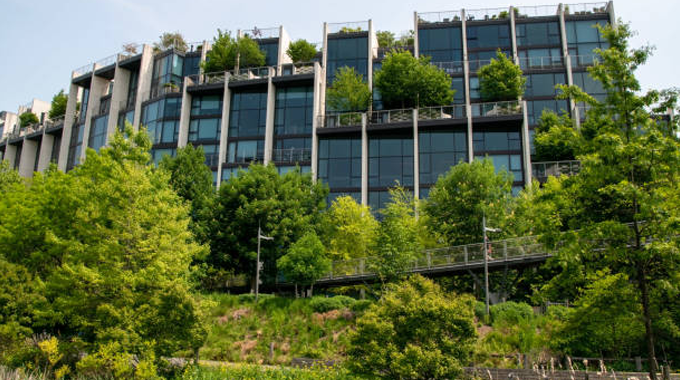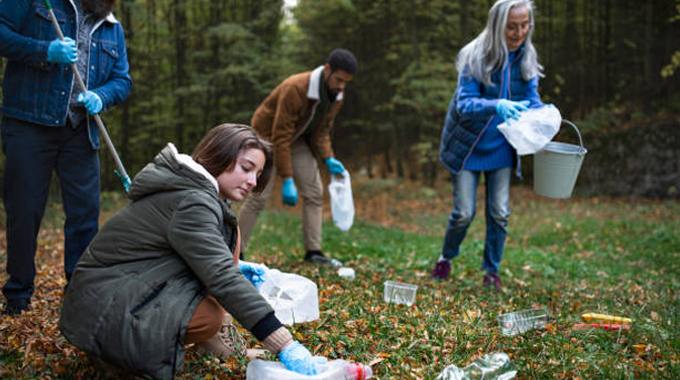Engaging Communities in Urban Forest Stewardship
- August 16, 2024
- 0 comment
Engaging communities in urban forest stewardship is a vital aspect of maintaining and enhancing green spaces in cities. This collaborative effort not only fosters a sense of ownership and responsibility among residents but also enhances the ecological health of urban areas. By involving community members in activities such as tree planting, maintenance, and educational programs, cities can cultivate a deeper connection between people and their natural environment. These initiatives encourage residents to actively participate in preserving and expanding urban forests, leading to numerous benefits, including improved air quality, reduced urban heat islands, and enhanced biodiversity.

Moreover, community engagement in urban forestry promotes social cohesion, as it brings people together from diverse backgrounds to work towards a common goal. This collective effort also raises awareness about the importance of urban forests, inspiring future generations to continue the stewardship legacy. Overall, involving communities in the care and management of urban forests is essential for creating sustainable, vibrant, and resilient urban environments.
Table of Content
- Benefits of Community Involvement
- Strategies for Engaging Communities
- Tools and Resources for Effective Engagement
- Challenges and Solutions
- Measuring Success and Impact
- FAQs
Benefits of Community Involvement
Environmental Benefits

- Improved Air Quality
Engaging communities in urban forest stewardship significantly enhances air quality. Trees act as natural air purifiers, absorbing pollutants and releasing oxygen. Community efforts in planting and maintaining trees contribute to a cleaner, fresher atmosphere, benefiting all residents. - Reduced Urban Heat Island Effect
Urban areas often suffer from the urban heat island effect, where concrete and asphalt absorb and retain heat. Trees provide shade and cool the air through transpiration, reducing temperatures in cities. Community-driven tree planting initiatives play a crucial role in mitigating this effect, making urban environments more comfortable and livable. - Enhanced Biodiversity
Urban forests are vital habitats for various species of flora and fauna. Community involvement in planting native species and maintaining green spaces promotes biodiversity, supporting a balanced ecosystem. This not only benefits wildlife but also enriches the urban landscape, making it more resilient to environmental changes.
Social Benefits

- Strengthened Community Ties
Urban forest stewardship fosters a sense of community and belonging. Collaborative activities such as tree planting events and forest cleanups bring people together, creating opportunities for social interaction and cooperation. This strengthens community bonds and encourages a collective responsibility for the local environment. - Increased Awareness and Education
Involving communities in urban forestry raises awareness about the importance of green spaces and environmental conservation. Educational programs and workshops provide valuable knowledge and skills, empowering residents to actively participate in stewardship efforts. This education cultivates a culture of environmental mindfulness and advocacy. - Enhanced Public Health and Well-being
Urban forests contribute to the physical and mental well-being of residents. Access to green spaces promotes outdoor activities, reducing stress and improving overall health. Community engagement in maintaining these spaces ensures their availability and quality, enhancing the quality of life for all.
Strategies for Engaging Communities

Educational Programs and Workshops
School-based Programs
Introducing urban forest stewardship in schools fosters environmental awareness from a young age. School-based programs can include tree planting projects, environmental science lessons, and hands-on activities that teach students about the importance of trees and how to care for them.
Community Workshops and Seminars
Workshops and seminars for community members provide education on various aspects of urban forestry. These events can cover topics such as tree care, the benefits of urban forests, and how to get involved in local stewardship projects. Such educational initiatives empower residents with the knowledge needed to actively participate in urban forest management.
Volunteer Opportunities
Tree Planting Events
Organizing tree planting events is an effective way to engage the community. These events not only increase the urban tree canopy but also provide a platform for residents to come together and contribute to a greener city. Participants gain a sense of accomplishment and connection to their community.
Forest Maintenance and Cleanup Drives
Regular maintenance and cleanup drives are essential for the health of urban forests. Volunteer opportunities for activities such as mulching, pruning, and litter removal keep green spaces thriving. These drives encourage continuous community involvement and stewardship.
Partnerships and Collaborations
Local Government and Non-Profits
Collaborations with local government agencies and non-profit organizations enhance the effectiveness of community engagement initiatives. These partnerships provide resources, expertise, and support for urban forest stewardship projects, ensuring their sustainability and impact.
Corporate Sponsorships and Involvement
Involving corporate sponsors can provide necessary funding and resources for urban forestry projects. Corporations can sponsor tree planting events, educational programs, and maintenance activities, demonstrating their commitment to environmental sustainability and community well-being.
Tools and Resources for Effective Engagement

Online Platforms and Social Media
- Community Forums and Groups
Online community forums and social media groups serve as platforms for residents to share information, coordinate activities, and discuss urban forestry initiatives. These virtual spaces facilitate communication and collaboration, enhancing community engagement. - Educational Websites and Apps
Websites and mobile applications dedicated to urban forestry provide valuable resources and tools. These platforms can offer information on tree species, care techniques, and upcoming events, making it easier for residents to get involved and stay informed.
Printed Materials and Signage
- Informational Brochures and Pamphlets
Printed materials such as brochures and pamphlets distributed at community centers, schools, and events can educate residents about the benefits of urban forests and how to participate in stewardship activities. These materials are accessible and can reach a wide audience. - Educational Signage in Urban Forests
Informational signage installed in urban forests can educate visitors about the local ecosystem, the importance of trees, and ongoing stewardship efforts. These signs serve as continuous reminders of the value of urban forests and encourage responsible behavior.
Challenges and Solutions
Common Obstacles in Engaging Communities
Lack of Awareness and Interest
One of the primary challenges is the lack of awareness and interest among residents. Many people may not understand the importance of urban forests or how they can contribute. Overcoming this requires effective communication and education strategies to raise awareness and generate interest.
Limited Resources and Funding
Resource constraints can hinder community engagement efforts. Securing sufficient funding and resources is crucial for the success of urban forestry projects. This challenge can be addressed through partnerships, sponsorships, and innovative funding strategies.
Solutions and Recommendations
Effective Communication Strategies
Clear and engaging communication is key to raising awareness and motivating community involvement. Utilizing various media channels, including social media, local news, and community meetings, can help reach a broader audience and convey the importance of urban forest stewardship.
Securing Funding and Resources
Developing a diversified funding strategy, including government grants, corporate sponsorships, and community fundraising, ensures the availability of necessary resources. Collaborating with stakeholders and exploring innovative funding models can sustain urban forestry initiatives.
Measuring Success and Impact

Metrics for Evaluating Community Engagement
- Participation Rates
Tracking participation rates in stewardship activities provides a measure of community engagement. Higher participation indicates successful outreach and community interest in urban forestry efforts. - Environmental Improvements
Assessing environmental metrics, such as the increase in tree canopy cover, improved air quality, and biodiversity, helps evaluate the ecological impact of community engagement. These improvements reflect the effectiveness of stewardship activities.
Long-Term Impact and Sustainability
- Continued Community Involvement
Sustaining long-term community involvement requires ongoing engagement and support. Regular activities, continuous education, and recognition of community efforts foster a lasting commitment to urban forest stewardship. - Ongoing Maintenance and Support
Ensuring the sustainability of urban forests necessitates continuous maintenance and support. Implementing regular care routines and providing resources for ongoing stewardship activities guarantee the health and longevity of urban green spaces.
Frequently Asked Question (FAQs)
1. What is urban forest stewardship?
Urban forest stewardship involves the active participation of communities in the care, management, and preservation of trees and green spaces within urban areas. This includes activities such as planting, maintaining, and protecting trees to enhance the ecological and social benefits of urban forests.
2. Why is community involvement important in urban forest stewardship?
Community involvement is crucial because it fosters a sense of ownership and responsibility among residents. It helps improve environmental quality, enhances biodiversity, strengthens community ties, increases awareness and education about the importance of urban forests, and promotes public health and well-being.
3. What are the environmental benefits of urban forest stewardship?
Engaging in urban forest stewardship improves air quality by absorbing pollutants and releasing oxygen, reduces the urban heat island effect by providing shade and cooling the air, and enhances biodiversity by creating habitats for various species of flora and fauna.
4. How does urban forest stewardship benefit the community socially?
Social benefits include strengthened community ties through collaborative activities, increased awareness and education about environmental conservation, and enhanced public health and well-being through improved access to green spaces and outdoor activities.
5. What strategies can be used to engage communities in urban forest stewardship?
Effective strategies include educational programs and workshops, volunteer opportunities such as tree planting events and forest maintenance drives, and partnerships with local government, non-profit organizations, and corporate sponsors.
6. How can educational programs and workshops help in engaging communities?
Educational programs and workshops provide valuable knowledge and skills about urban forestry, empowering residents to participate actively in stewardship efforts. These initiatives can be school-based or community-focused, offering hands-on experiences and fostering environmental awareness.
7. What are some examples of volunteer opportunities for urban forest stewardship?
Volunteer opportunities include tree planting events, forest maintenance and cleanup drives, and other activities that involve direct participation in the care and enhancement of urban green spaces.
8. How do partnerships and collaborations enhance community engagement in urban forestry? Partnerships with local government agencies, non-profits, and corporate sponsors provide additional resources, expertise, and support for urban forestry projects. These collaborations ensure the sustainability and impact of stewardship initiatives.
9. What tools and resources are essential for effective community engagement in urban forestry?
Essential tools and resources include online platforms and social media for communication and coordination, educational websites and apps, printed materials like informational brochures and pamphlets, and educational signage in urban forests.
10. Can you provide examples of successful community engagement projects in urban forestry?
Examples of successful projects include cities that have implemented comprehensive tree planting programs, educational campaigns, and collaborative maintenance efforts, resulting in improved urban environments and stronger community involvement.
11. What are some common challenges in engaging communities in urban forest stewardship?
Common challenges include a lack of awareness and interest among residents, limited resources and funding, and difficulties in sustaining long-term community involvement.
12. How can these challenges be addressed effectively?
Challenges can be addressed through effective communication strategies, securing diversified funding and resources, and continuously engaging the community through regular activities, education, and recognition of their efforts.
13. How is the success and impact of community engagement in urban forestry measured?
Success is measured through metrics such as participation rates, environmental improvements (e.g., increased tree canopy cover, improved air quality), and long-term sustainability indicators such as continued community involvement and ongoing maintenance.
14. What are the long-term impacts of community engagement in urban forest stewardship?
Long-term impacts include sustained environmental benefits, such as healthier and more resilient urban forests, and lasting social benefits, such as a stronger sense of community and ongoing environmental stewardship.
15. How can individuals get involved in urban forest stewardship in their community?
Individuals can get involved by participating in local tree planting events, joining community workshops and seminars, volunteering for maintenance and cleanup drives, and supporting or initiating partnerships with local organizations and government agencies.

Gilbert Griffin
Forestry AuthorGilbert Griffin is a forest management expert specializing in sustainable practices, forest health, conservation, and land management. With extensive knowledge in pest control, disease management, and habitat restoration, Gilbert develops strategies to preserve forest ecosystems and biodiversity. Passionate about the natural world, Gilbert adapts to changes in forest management and stays updated through continuous learning. Gilbert also provides seasonal advice to optimize forest care throughout the year.









Leave your comment